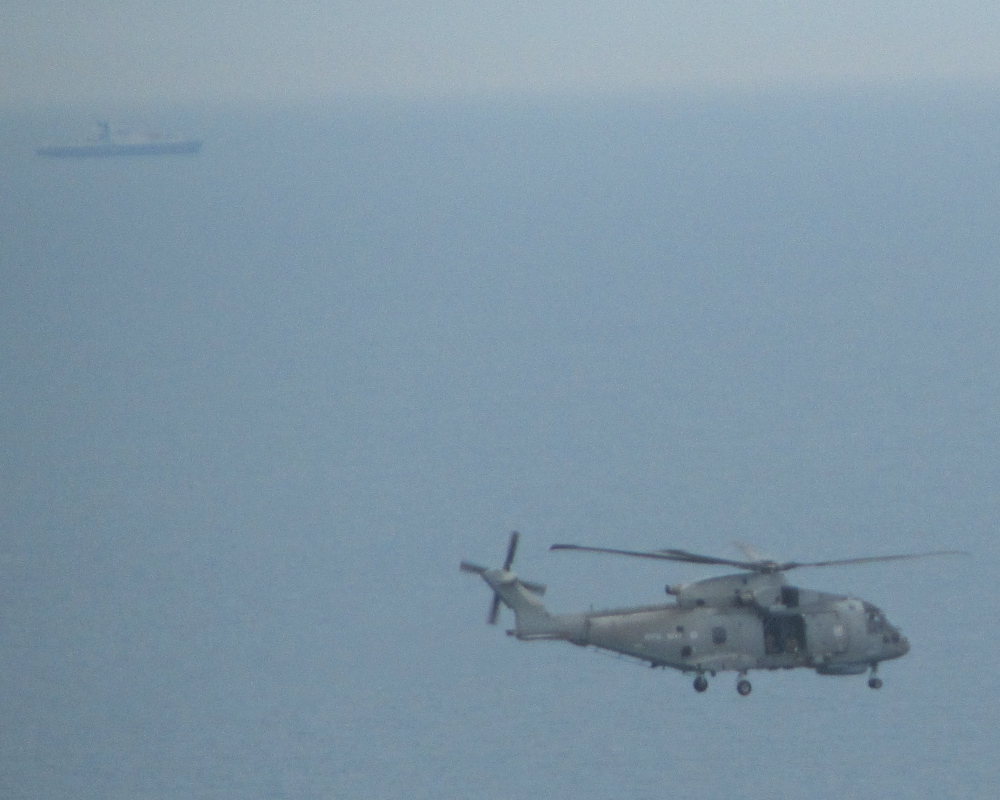
In Sussex we are fortunate to have a number of locations such as Mill Hill where we are able to record many of the UK butterflies which fly throughout the year.
Several butterflies however are becoming extremely rare and can only be found where their unique habitat still exists.
One such butterfly is the Lulworth Skipper which, as its name suggests, can only be found along a small stretch of the Dorset coastline.
We chose this location for our first field trip away from home as it is relatively close, and the whereabouts of our quarry is well documented.
We also decided that it may be a good idea, if permitted by the owner of our self-catering accommodation, to try out our new 15W Actinic bulb which we had purchased for just such an occasion.
We did not think that unleashing the mother equivalent of Big Bertha on the unsuspecting population of Lulworth would go without comment so for field trips we decided to tone things down a tad.
Our hosts were more than happy for us to set our trap and suggested the small front garden as a suitable location and we could use the shed to store it during our outings during the day.
Lulworth is a much-visited holiday resort offering a beautiful coastline with a ‘range’ of outdoor activities.
Our interest was in fact the Army Range which is opened to the public at certain times of the year and our visit was planned to coincide with one such time.
It was actually opened earlier than normal because the Summer Olympics were being held in the UK at the time.
Our reasoning was that access to the walks within these normally restricted areas would give us the best opportunity of recording butterflies or day flying moths in their natural environment.
Access to a number or these coastal paths were well within walking distance of where we were staying, and we missed no opportunity weather permitting.
One of our favourite circular routes starts at Little Bindon just outside of Lulworth where you can gain entrance to the army range.
From here we followed the uppermost path heading towards Mupe Rocks and although only one mile in distance took us quite some time as we had so many opportunities to test out our photography skills.
It is an incredible setting with views of Weymouth in the distance where we could see much activity in relation to the Olympic games with the area being policed by naval craft as well has helicopters patrolling up and down.
Along this path there are many signs warning you not to stray off it as there is a possibility of unexploded bombs but skippers as their name suggests fly very rapidly and for the most part off the designated track.
It was on one such occasion that I began to stray in my quest to get some good shots away from this path which now in hindsight was not such a clever idea.
Suffice to say I survived my meanderings and managed some good shots of the Lulworth Skipper but not without some keen interest from the surveillance helicopter who must have spotted me and come in for a closer look.
I knew I was in trouble now not only with the wife but also with the military who hovered above my head.
Coming from Crewe I have found myself on a number of occasions in places where I possibly shouldn’t have been and learnt then the lesson that the best thing to do was to ignore them and continue as if nothing was wrong in the hope that they would think I was just some idiot who had wondered off the path in search of insects.
Luckily enough this is exactly what they must have thought and after a short time headed off having first probably having taken pictures and details etc.,

The route back to entrance to the range took us down a steep path where we encountered many white day flying moths which I dearly want to get some good shots of but as with the skipper they did not want to stay on the path and I was certainly not going to stray from this one.

Cliffs can prevent quality photography of moths or butterflies who decide not to stay on the clearly marked routes, but shadows can also pose a significant problem and will be the subject of my next post, fortunately not my last!